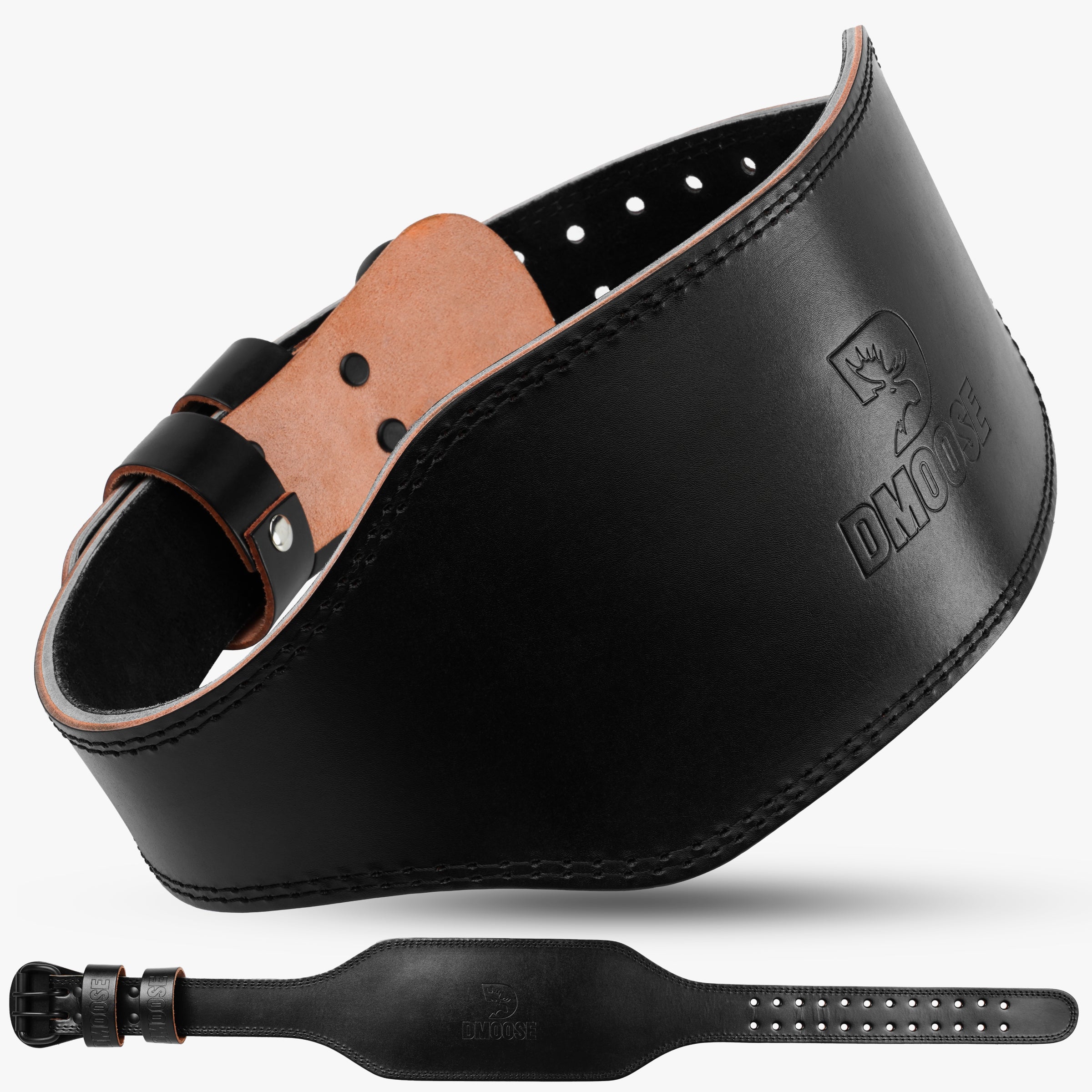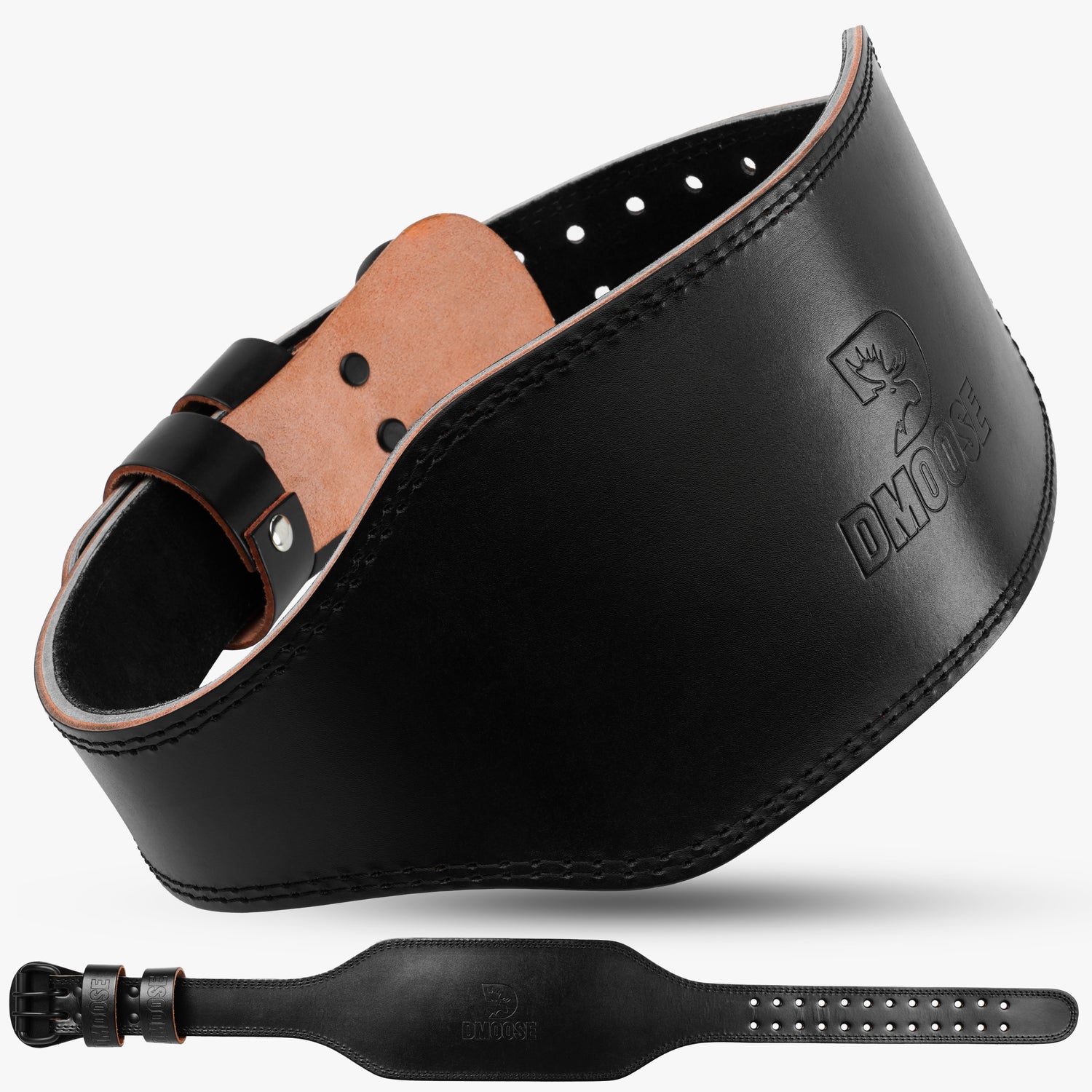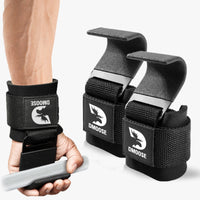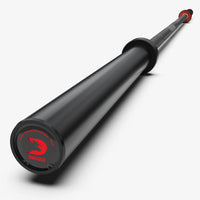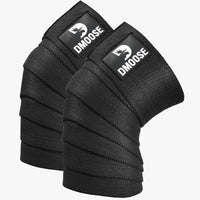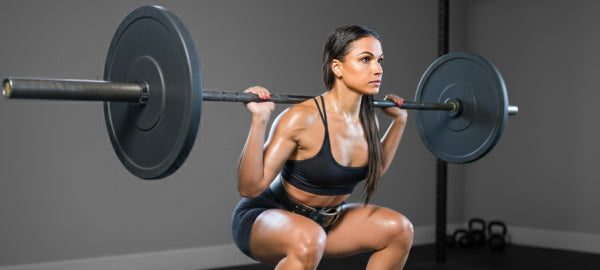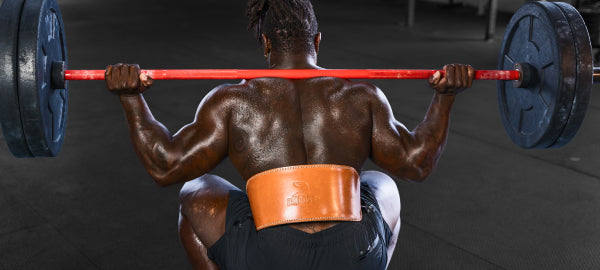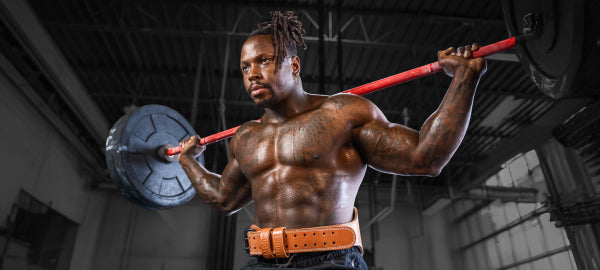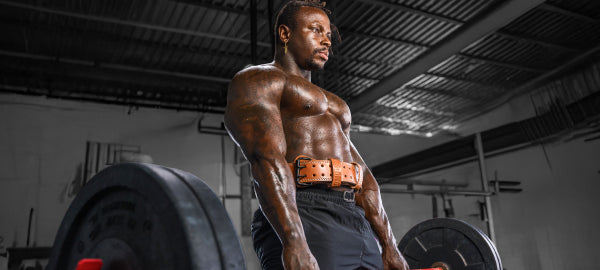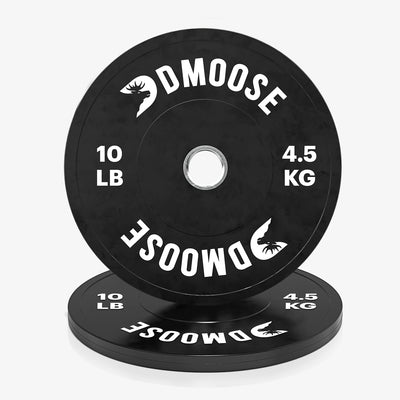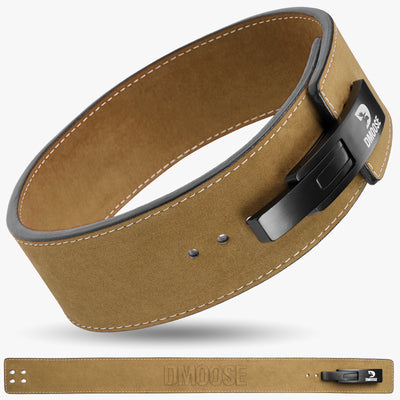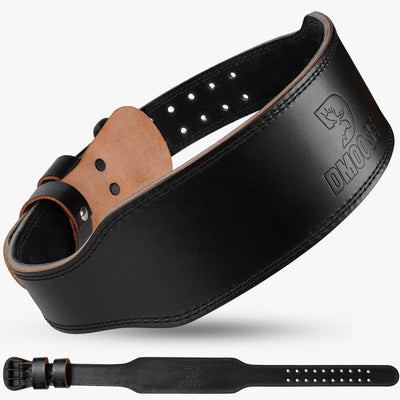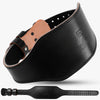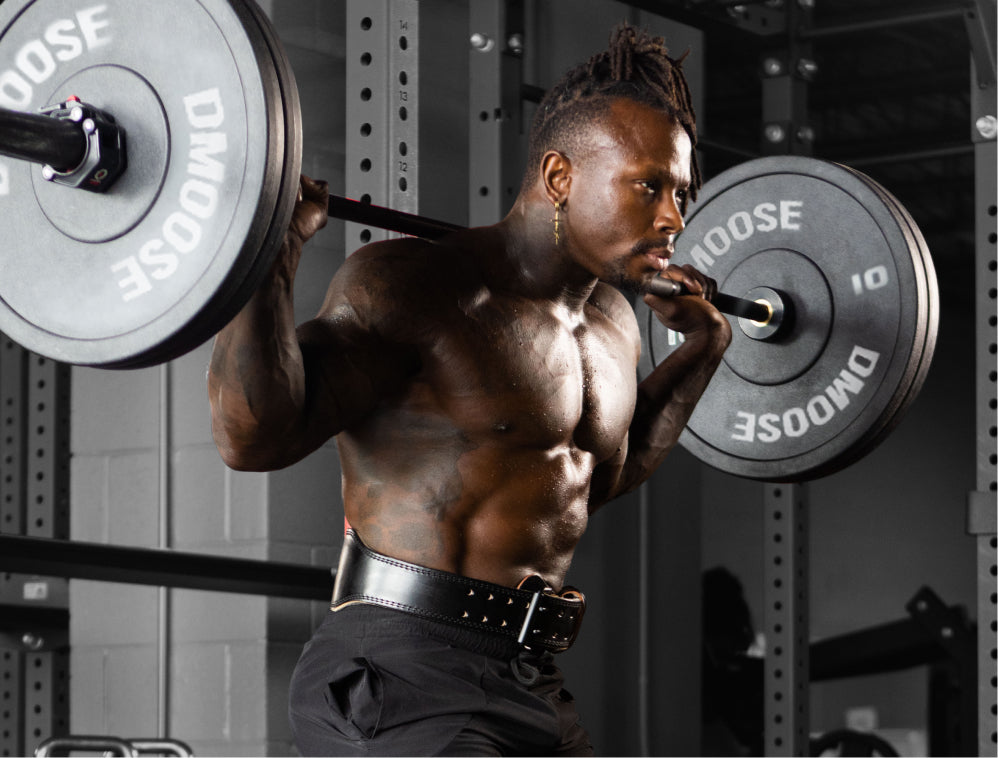
| Material | Genuine cowhide leather (7mm thick). |
| Width | 6-inch back support panel for maximum stability. |
| Buckle | Double-pronged steel buckle with anti-rust zinc coating. |
| Adjustment | 11 precision-spaced holes for a customizable fit. |
| Padding | Spongex foam lumbar padding for comfort and even pressure distribution. |
| Sizes | Available in Small (23–29" waist), Medium (29–33"), Large (33–37"), XL (37–42"), XXL (42–48"). |
| Colors | Black or Brown color options. |
| Use Case | Ideal for heavy squats, deadlifts, and powerlifting training. |
| Care | Wipe down with a damp cloth and mild soap; air dry (do not machine wash). |
Your satisfaction matters to us. If you're unhappy with your order, we’ll process a full refund within 60 days of delivery. No questions asked.
Why Use DMoose 6-Inch Leather Weightlifting Belt?
A weightlifting belt provides core support and stability, making heavy lifts safer and more effective – boosting your confidence.
Key Features
Each feature of the DMoose 6-Inch Leather Belt is engineered to maximize your comfort, safety, and lifting performance.
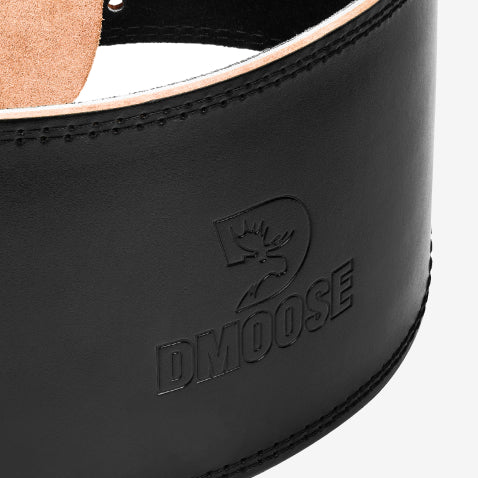
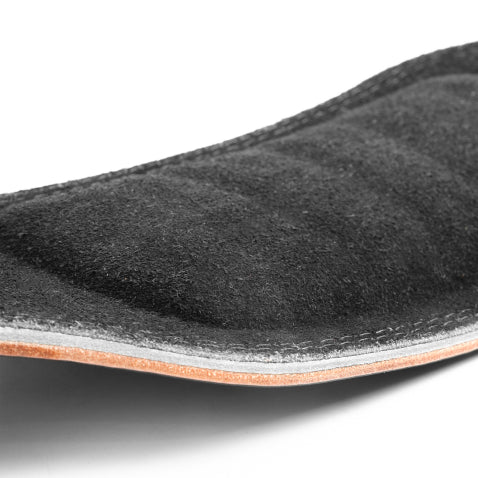
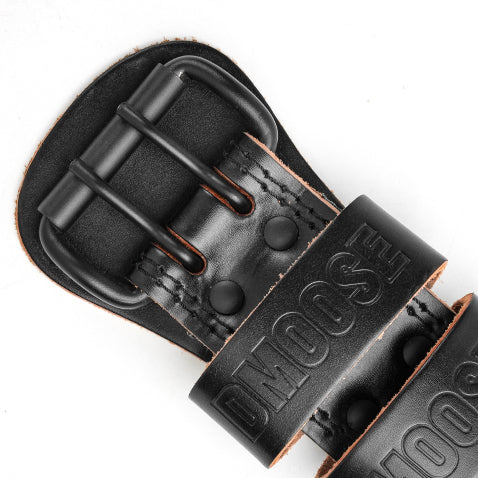
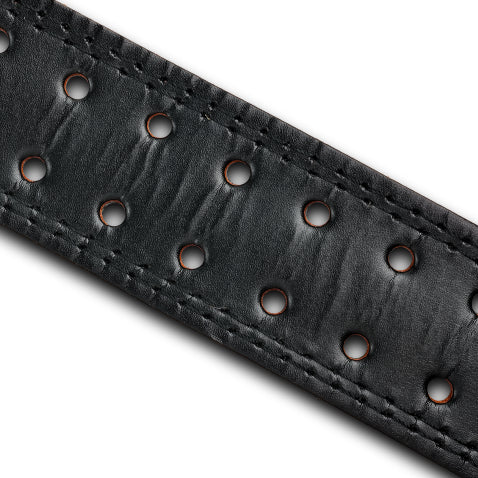
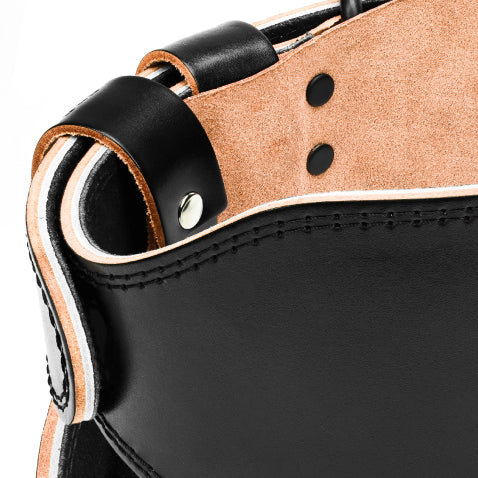
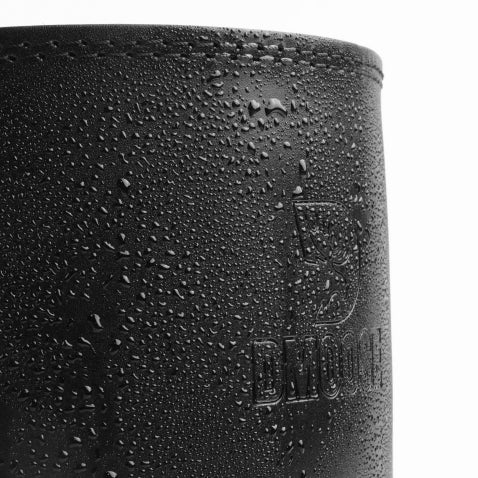
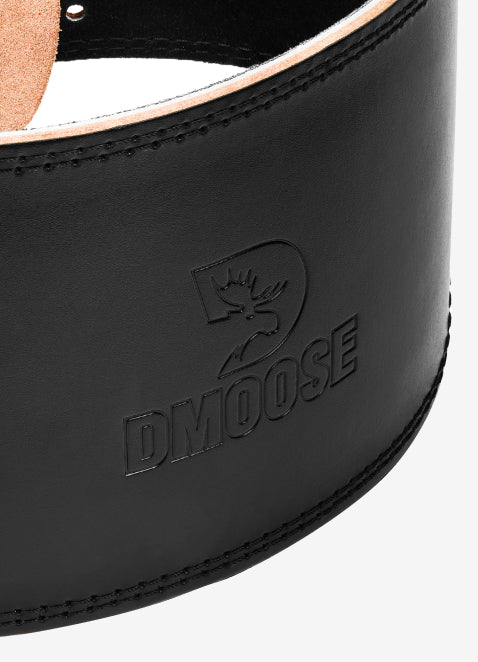
FREQUENTLY ASKED QUESTIONS
What size should I get?
Measure your waist around the belly button for the most accurate sizing. Use the DMoose size chart to choose the correct size belt based on your waist measurement. (For example, a 33″ waist would wear a size Large.)
How can I clean my belt?
To clean the leather belt, simply wipe it down with a damp cloth and mild soap. Do not soak the belt in water. After wiping, let it air dry at room temperature – avoid direct heat or sunlight, which could dry out or crack the leather.
Is the belt suitable for both men and women?
Yes. The DMoose Leather Weightlifting Belt is designed as a unisex item, providing effective support for both men and women alike. It comes in multiple sizes so lifters of any body type can find a secure, comfortable fit.
How does it help during workouts?
Wearing the belt stabilizes your core and supports your lower back, which helps you maintain proper form under heavy loads. By reducing stress on the spine, the belt can decrease injury risk and even enhance your lifting performance by allowing you to lift more safely.
Can I use the belt for exercises other than lifting?
While it’s ideal for weightlifting movements like squats, deadlifts, and overhead presses, you can also use the belt for powerlifting, bodybuilding, or any exercise that benefits from extra back support. Essentially, any time you need additional core stability and lumbar support, the belt can help.
How long will the belt last?
This belt is built to withstand years of regular, intense use. The genuine leather and reinforced stitching ensure durability. With proper care (cleaning and drying as recommended), you can expect the belt to remain supportive and secure through many training cycles.
Are weightlifting belts good for beginners?
Yes, beginners can use a weightlifting belt. In fact, a belt can help new lifters learn to brace their core and feel more stable as they start handling heavier weights. It provides support while you develop strength and technique. Just remember not to rely on it for every set – focus on form first, and use the belt for challenging lifts once you have the basics down.
How tight should I wear the belt?
Snug, but not so tight that you can’t breathe or brace properly. You should be able to fit a finger between the belt and your abdomen. The belt should feel secure when you inhale and push your abs against it. Aim for a tightness that supports your core without causing discomfort or restricting breathing.
Should I wear the belt for all exercises?
No – you should reserve the belt for heavy, compound lifts where extra support is beneficial. Lifts like squats, deadlifts, heavy rows, and overhead presses are common uses for a belt. You generally don’t need a belt for lighter exercises or isolation movements. Save it for the sets that challenge your core stability the most.
Will using a belt weaken my core?
No, when used properly a weightlifting belt will not weaken your core or abs. Studies have found no evidence that belts cause any long-term decrease in core muscle activation or strength. You still have to brace your abdominal muscles against the belt, so your core stays engaged. For best results, use the belt for your max lifts and also include beltless training to ensure your core gets plenty of strengthening work on its own.
